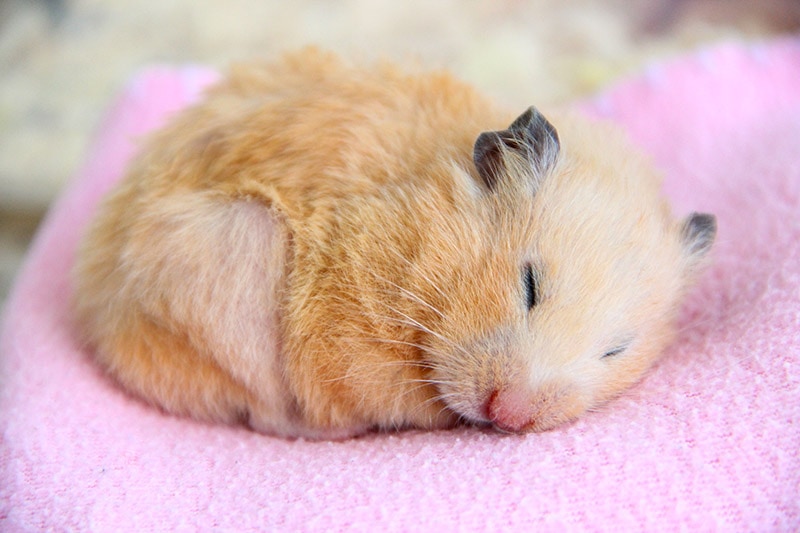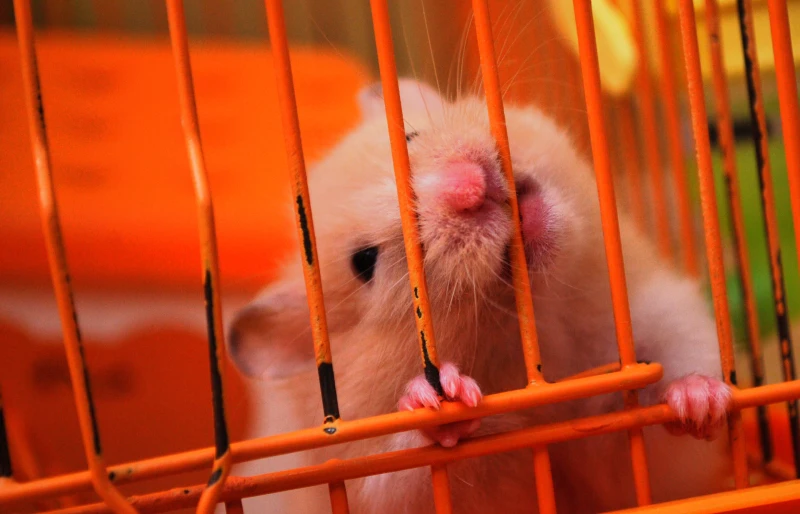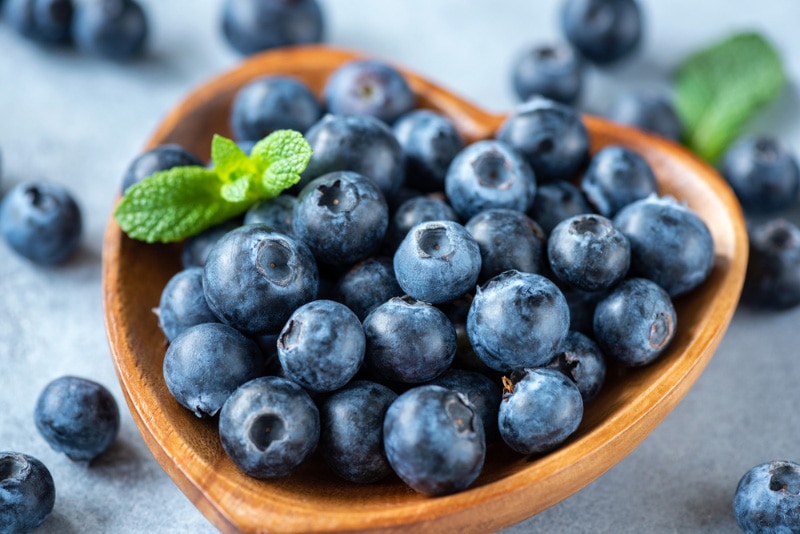What Fruits & Vegetables Can Hamsters Eat? Vet Approved List
By Jordyn Alger
Updated on
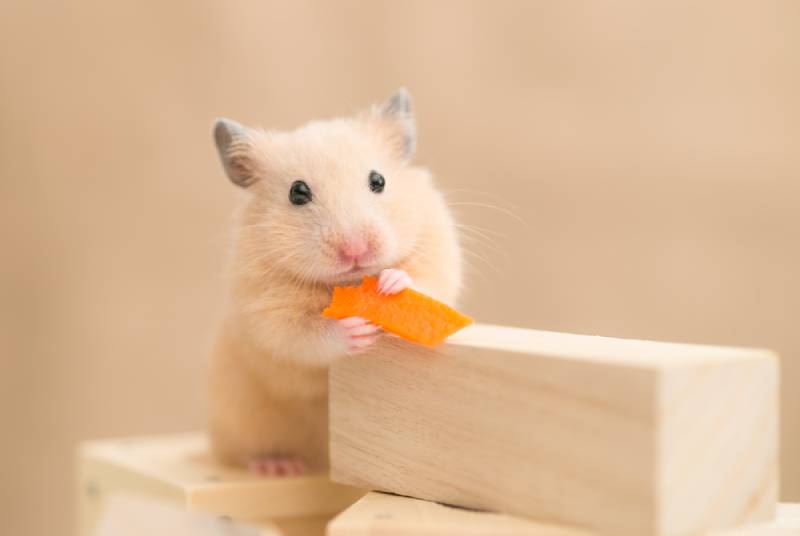
Click to Skip Ahead
A healthy diet is vital to your hamster’s health and well-being. The primary part of your hamster’s diet should be healthy commercial pellet food to ensure they get the right amount of carbohydrates, protein, fats, and fiber. In addition to this, hamsters will benefit from eating some animal protein like mealworms, leafy green vegetables like dandelion leaves and kale, plus some seeds, fruits and vegetables. So which fruit and veggies are safe for hamsters? In this article, we will look at some good options to feed your pet, as well as the foods that are not safe for them.
What Vegetables Can Hamsters Eat?
Vegetables can be a healthy supplement to your hamster’s pellet diet. Leafy greens such as kale, turnip & mustard greens, dandelion leaves, and spinach top the list of hamster-healthy vegetables, but many people want to know what sort of fleshy vegetables they can offer as well. There are lots of different vegetables that our hamsters can choose from, and below we’ve listed a few good options.
1. Carrot
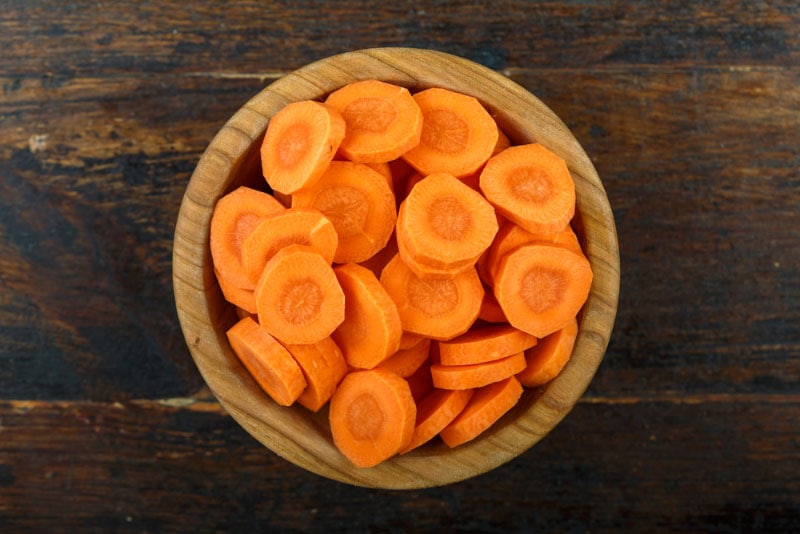
Carrots are root vegetables that are rich in fiber, which can boost digestive health. Carrots are usually orange but can also come in purple, yellow, red, and white varieties. They are a great source of beneficial vitamins, minerals, and antioxidants.
2. Broccoli
Broccoli is a green veggie that is a part of the cabbage family. It is rich in antioxidants, fiber, vitamins, and minerals. You can feed the stalks or the flowering pieces to your pet; just make sure they’re thoroughly washed and chopped into bite-sized pieces.
3. Peas
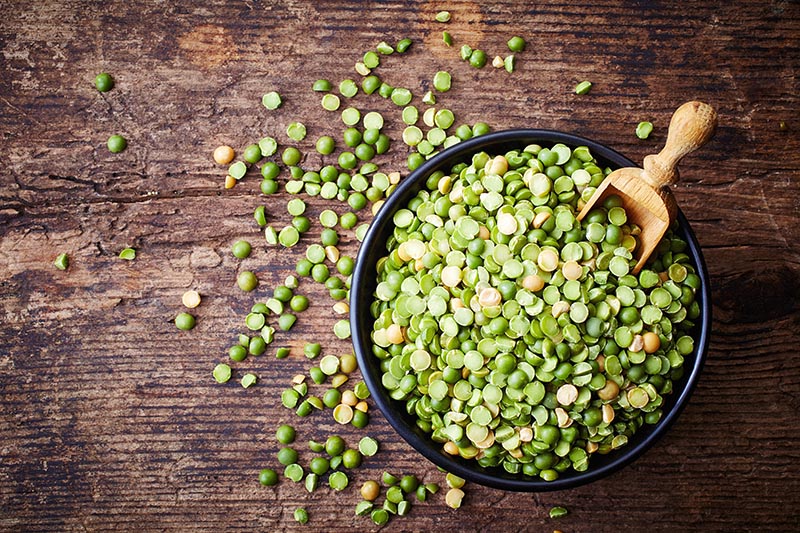
Peas are an excellent source of carbohydrates, which you may remember is a predominant part of a healthy hamster’s diet. These green veggies are also a great source of protein and fiber but are low in fat and cholesterol.
4. Celery
Celery belongs to the same family as parsnips, parsley, and carrots. The crunchy stalks of celery have a high water content, making them an ideal low-calorie snack with hydrating qualities. Another benefit to celery is that they are a great source of fiber, which can improve your pet’s digestion. Avoid feeding your hamster too many of these, however, as the high moisture content can cause diarrhea, and they provide very little in the way of nutritional value.
5. Capsicum
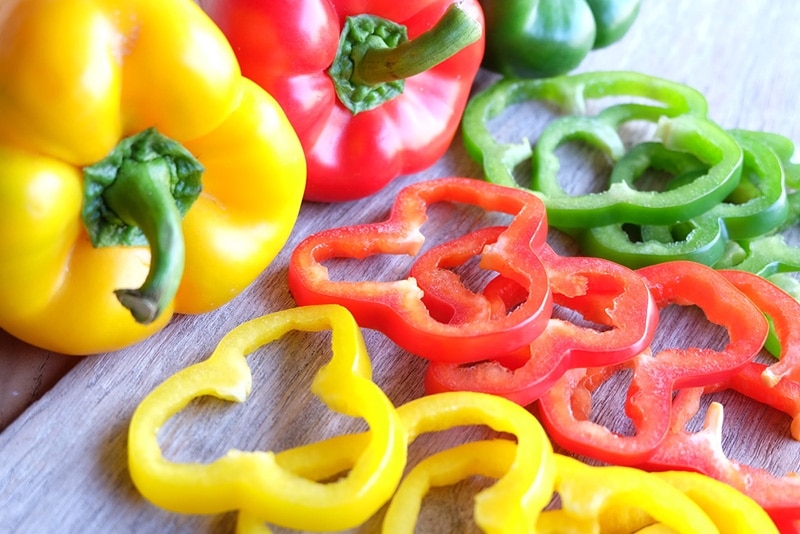
The only member of the peppers family that doesn’t contain the spicy chemical capsaicin, these crisp and flavorful vegetables (that are technically fruits) are a great source of vitamins and minerals for your tiny friend. The different colors have slightly different flavors, and you might find that your hamster has a favorite!
Which Fruits Can Hamsters Eat?
Fruit can be a tasty treat for your hamster, but ensure you only serve it occasionally. Due to the high sugar content, fruit should only be given sparingly.
1. Apple

Apples come in many colors and varieties, and all of them can benefit your pet. They are a tasty, crunchy treat and have plenty of nutrients. They are rich in antioxidants and fiber, boosting your hamster’s immune and digestive systems. Plus, they provide a range of healthy vitamins. Avoid the core and seeds, and only feed your hamster the fruit’s flesh.
2. Blackberries
Although delicious, juicy and sweet, blackberries are high in fiber and contain much less sugar than most other fruits, making them a great option for your hamster. But be warned, they can stain – the cage, bedding, fur! The best way to feed your hamster some of these tasty fruits is to pop them in a stain proof area whilst they are enjoying their treat.
3. Banana
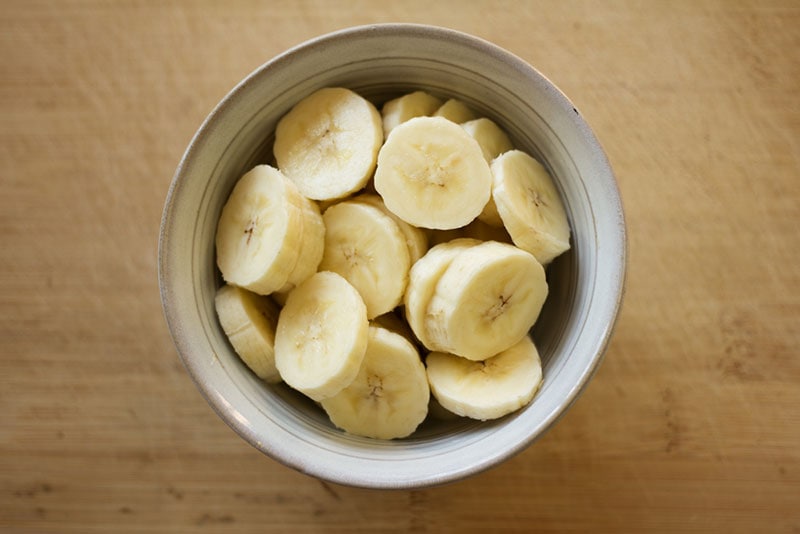
Bananas are high in fiber and antioxidants, making them beneficial to digestion and immunity. They are rich in nutrients such as potassium, vitamin C, vitamin B6, and magnesium.
Peeling and chopping the banana before feeding it to your pet is a necessity, and you should also remove any stringy pieces that could get caught in your hamster’s throat. Since bananas can be easily mashed, you can mix them into other foods for your pet to create yummy treat balls.
4. Pear
Pears are a rich source of essential antioxidants and dietary fiber, and contain no fat or cholesterol. They are also low in calories, making them a good treat for a hamster on a diet. Remove the stem and the core of the fruit before feeding pear to your hamster. Chop it into manageable bites, but you don’t have to remove the skin.
5. Cantaloupe
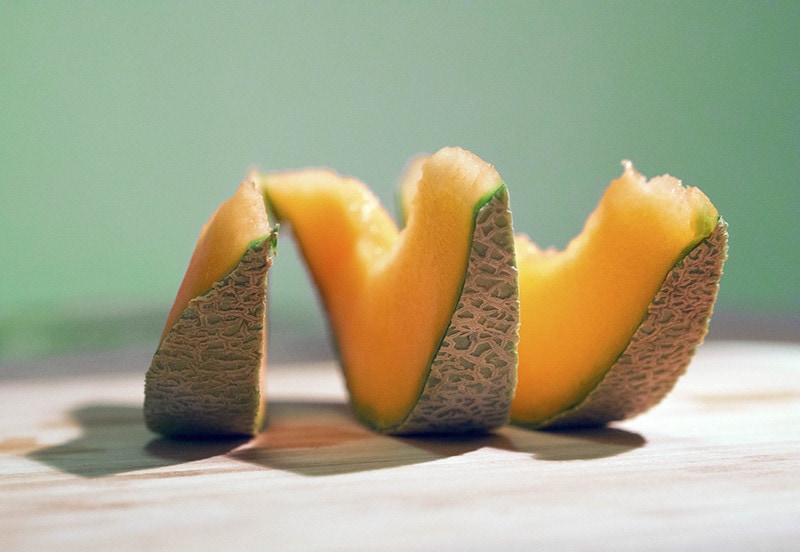
Cantaloupe is a good source of vitamin A, vitamin B6, and vitamin C. It also contains plenty of fiber and water, which helps your hamster’s digestion and keeps them hydrated. Remove the seeds from the cantaloupe before feeding the fruit to your hamster; the seeds are hard, sharp, and potentially dangerous. Serve only the flesh of the fruit as the rind is too tough for your hamster.
Which Foods Should Hamsters Avoid?
When considering which fruits and veggies to feed your hamster, you should also be aware of the foods that are unsafe. While this list is not exhaustive, it contains common hazardous fruits and veggies.
1. Citrus fruits
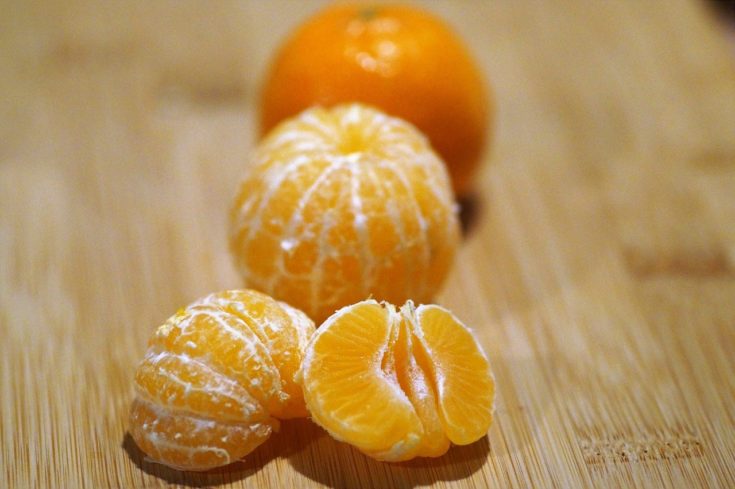
The high levels of citric acid in oranges, lemons, limes and grapefruit can cause serious digestive issues.
2. Onions
Onions contain a compound that attacks the red blood cells, which are responsible for transporting oxygen to the body. All members of the Allium family should be avoided for your pet’s safety.
3. Pickles
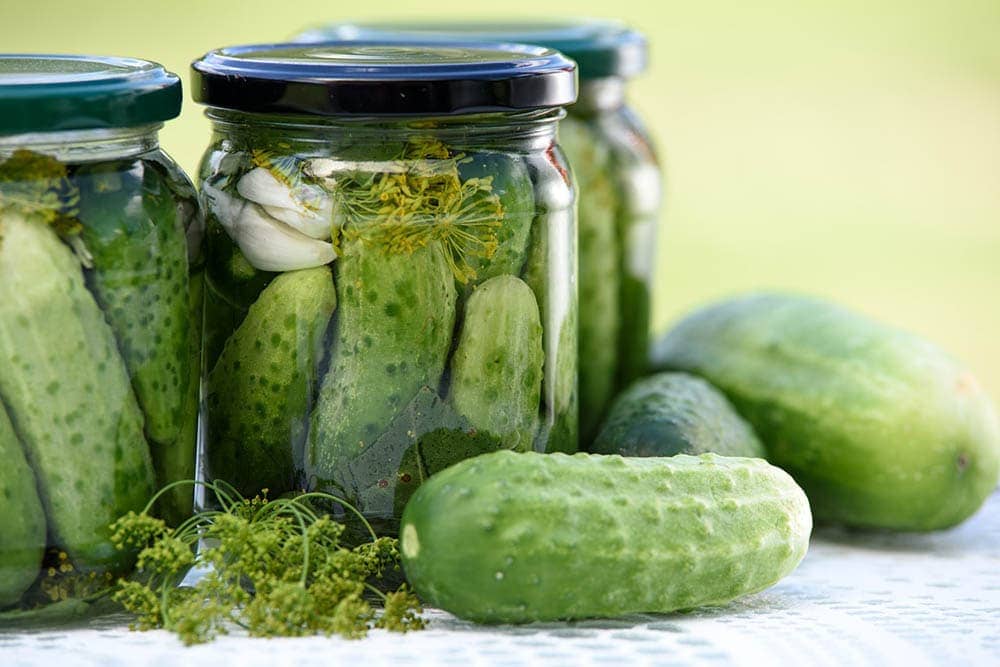
Pickled vegetables (not just pickled cucumbers) are not safe for your hamster due to the presence of vinegar, wine, sugar, salt, or other ingredients.
4. Raw Potatoes
Potatoes are starchy vegetables packed with antioxidants, vitamins, and minerals. When cooked, small portions of potatoes are safe for your hamster to eat. However, raw potatoes are a different story.
Raw potatoes contain a compound called Solanine that is harmful to hamsters and can cause serious gastrointestinal distress. In severe instances, consumption of a raw potato can even lead to death 1.
5. Eggplant
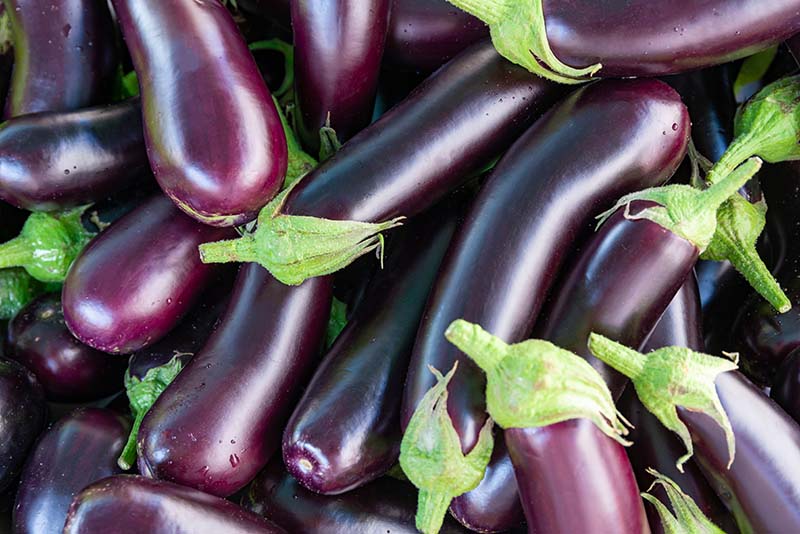
Eggplants should be avoided, even though some hamsters enjoy eating them. They are members of the nightshade family, which contains some fairly harmless members (eg. tomatoes and white potatoes), and some that are not so harmless (tobacco, Deadly Nightshade). Eggplants, also known as aubergines, fall somewhere in the middle.
Conclusion
We hope that by reviewing the vegetables and fruits your hamster can eat, you feel more confident in choosing a snack for your pet. Similarly, be wary of the foods you should avoid. When feeding new fruits and veggies to your pet, consult your vet first and introduce new foods slowly. Rotating the healthy fruits and veggies will provide more variety to your hamster.
See also:
Featured Image Credit: stock_shot, Shutterstock


